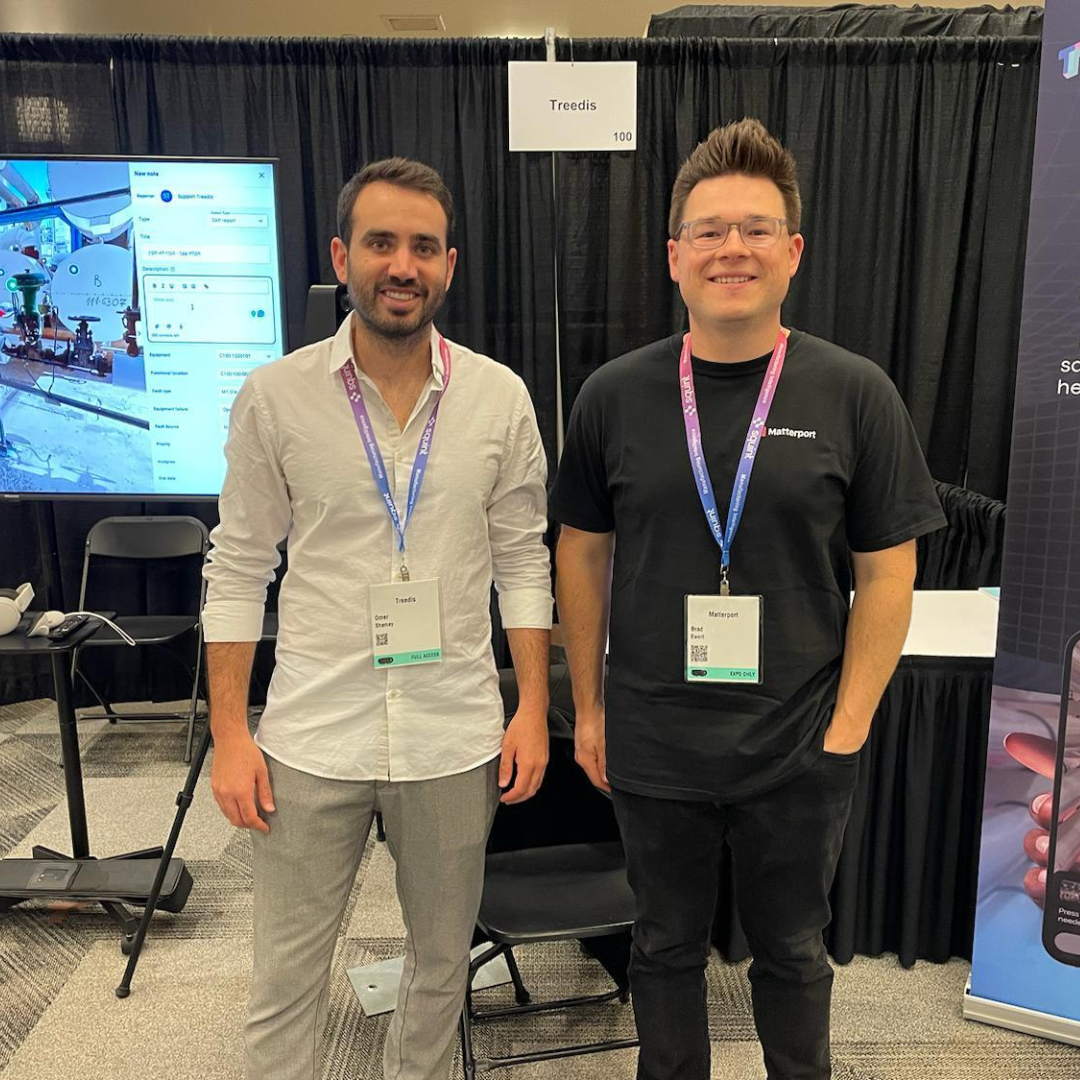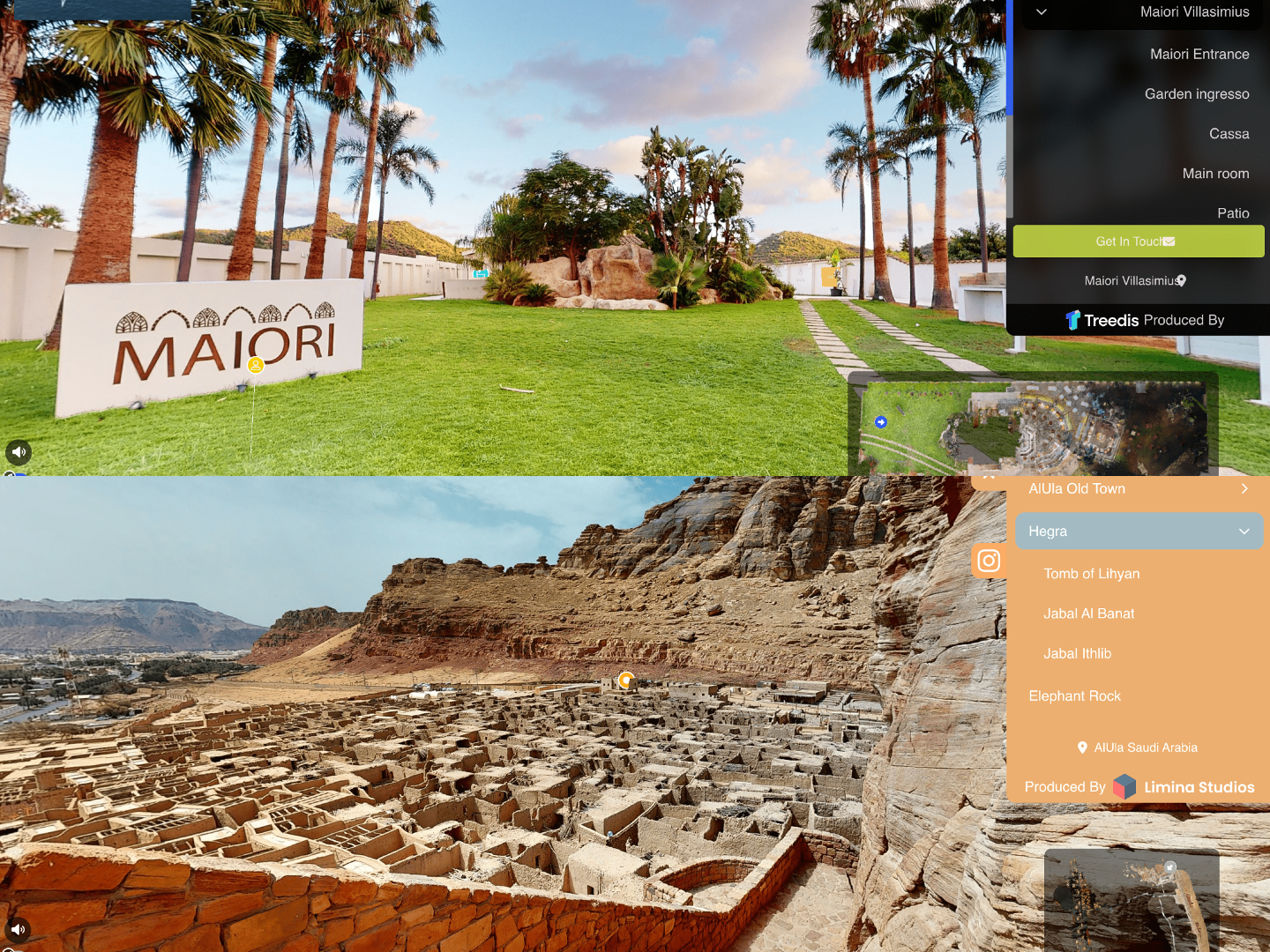May 30, 2025
Blog
Redefining Real Estate: Unlocking Doors with Virtual Tours and Extended Reality
.png)


Mismatched expectations. This is a common problem faced by real estate agents when it comes to listings and interested buyers. This mismatch, and subsequent disappointment, happens when the details of a property listing and marketing materials don’t align with what potential buyers are expecting during property visits.
Bridging this gap is vital, and emerging technology makes it straightforward. With virtual tours and extended reality software, real estate agents can engage with buyers more effectively and interactively than ever before.
In this blog, we’ll explore the various ways in which virtual tours and extended reality offer a unique solution to the dilemma of connection disparity and the challenge of mismatched expectations in the dynamic real estate sector.
How Do Virtual Tours Improve Property Accuracy for Buyers?
One of the most significant advantages offered by virtual tours is accuracy. They empower agents to showcase properties precisely as they are, leaving no room for surprises or disappointments during in-person viewings.
Buyers can navigate through every nook and cranny, gaining a comprehensive understanding of the property's layout, features, and condition.
In VR mode, this genuine experience is further intensified, immersing potential buyers completely.
The accuracy offered by virtual tours is so crucial that a whopping 54% of buyers won’t even consider a house listing unless it includes one. Moreover, the transparency offered by virtual tours not only saves valuable time for both agents and potential buyers but also sets realistic expectations for the property.
What Are the Benefits of Immersive Property Experiences for Lead Generation?
Virtual tours aren’t just about showcasing properties, they’re about drawing in a crowd of astute and discerning buyers.
These immersive experiences provide a gateway for potential buyers to intimately connect with a property from afar, enabling well-informed judgements about the space.
The outcome? A surge in more qualified leads. Listings with virtual tours tend to sell 31% faster than those without them.
That’s because prospective buyers have already forged a bond with the property, leading to a more streamlined sales journey.
How Can Virtual Listings Expand Market Reach?
The reach of virtual tours extend beyond physical limitations. Whether individuals are stuck in traffic, dealing with unexpected home issues, or enjoying a vacation, virtual listings open a window of engagement.
Prospective buyers get round-the-clock access to the property, free from the pressure of hurried viewings. Notably, real estate listings featuring a virtual home tour experience an 87% increase in views compared to those lacking this immersive feature.
Virtual property tours via video calls also becomes possible, enabling interested buyers from anywhere to explore properties with an agent. This expanded reach connects real estate professionals with new audiences and widens their market presence.
In What Ways Does Virtual Staging Foster Connections?
Virtual staging adds another layer of imagination and connection to properties. For those who struggle to envision themselves in empty spaces, virtual staging introduces 3D objects, facilitating a stronger connection and visualization of the property's potential.
How Can Engagement Analytics Enhance Your Sales Strategy?
Engagement analytics bring valuable insights into viewer interactions with properties. By understanding viewer preferences and behavior, real estate professionals can fine-tune their in-person viewings for maximum effectiveness, thanks to data collected during virtual tours.
What Is the Treedis Advantage in Meeting Buyer Expectations?
Incorporating Treedis into the real estate sector proves highly effective in not only meeting but exceeding prospective buyers' expectations, fostering lasting connections with properties.
At its core, the platform necessitates the creation of a digital twin for each property, serving as the cornerstone for the immersive experiences it subsequently delivers through virtual tours. Once this digital twin is uploaded, the seamless integration of Treedis and its array of virtual tour functionalities becomes readily accessible.
How Do Treedis Enhanced Virtual Tours Create Immersive Experiences?
Prospective buyers can immerse themselves in properties using various devices, from virtual reality headsets to computers and mobile devices. This flexibility allows them to interact with virtual objects, aiding them in making informed purchasing decisions.
Additionally, the Treedis 3D editor empowers agents to creatively stage spaces, enhancing the property's appeal.
What Real-Time Connections Can Treedis Hub and Avatars Provide?
The Treedis Hub and Avatars feature further extends the reach of virtual tours. Serving as a dynamic video conferencing tool, it facilitates remote visits to property listings. Agents can guide users through properties in real-time, connecting with a broader audience than ever before.
How Can Treedis Analytics Offer Insights for Real Estate Professionals?
The Treedis analytics page offers a range of valuable insights, including the duration spent on a tour, a heat map illustrating the tour’s popular areas, viewership statistics such as peak times, and even geographic data, revealing the countries from which it was accessed.
In conclusion, virtual tours and extended reality technologies are revolutionizing the real estate industry, resolving the challenge of mismatched expectations and forging deeper connections between properties and potential buyers- ultimately unlocking more doors.
These innovations offer accuracy, stronger leads, wider reach, imagination, and enhanced engagement analytics. When coupled with platforms like Treedis, they provide a holistic solution for creating unforgettable real estate experiences that meet and exceed buyers' expectations.
The future of real estate is more immersive and connected than ever before, thanks to these transformative technologies.
More Articles
More Articles



May 30, 2025
Future-Proofing Operations with Flows
Want your team to train better? We have your solution. This blog breaks down our standout feature, Flows, showing it's potential for your organisation.
.png)

Jan 14, 2025
How Immersive Technologies Are Revolutionizing Workforce Training and Closing the Skills Gap
Immersive technologies like AR, VR, and digital twins are revolutionizing workforce training by addressing the growing skills gap with engaging, hands-on learning experiences. These solutions enhance retention, boost productivity, and reduce costs, making them essential for dynamic, scalable training in a rapidly evolving job market.


Nov 27, 2024
What's Next For Training? Takeaways From The Augmented Enterprise Summit
In October, we joined the Augmented Enterprise Summit (AES) with Matterport, connecting with industry leaders and Fortune 500 companies while sharing key XR insights.


Jun 28, 2024
Digital Twin Awards: Success Stories
The Digital Twin Awards honor virtual tour innovation. This year, Treedis users Farhad Berahman from Limina Studios and Francesco Loddo from SardiniaVirtualTours3D won in historical and hospitality categories. Farhad's tour of AlUla captivated 2 million viewers, while Francesco's tour of Maiori Villasimius boosted bookings by 25%. Their achievements showcase the transformative power of Treedis technology.
%20(1).jpg)

Jun 5, 2024
Key Insights from Hannover Messe: The Future of Manufacturing in Industry 4.0
At the 2024 Hannover Messe, Treedis showcased its Connected Workers solution with AWS, Vodafone Business, and Matterport, integrating digital twins and live sensor data to enhance manufacturing efficiency. This collaboration highlighted the importance of strategic partnerships in advancing Industry 4.0. Treedis remains committed to providing scalable, innovative solutions for the evolving manufacturing landscape.


.jpg)
.png)











